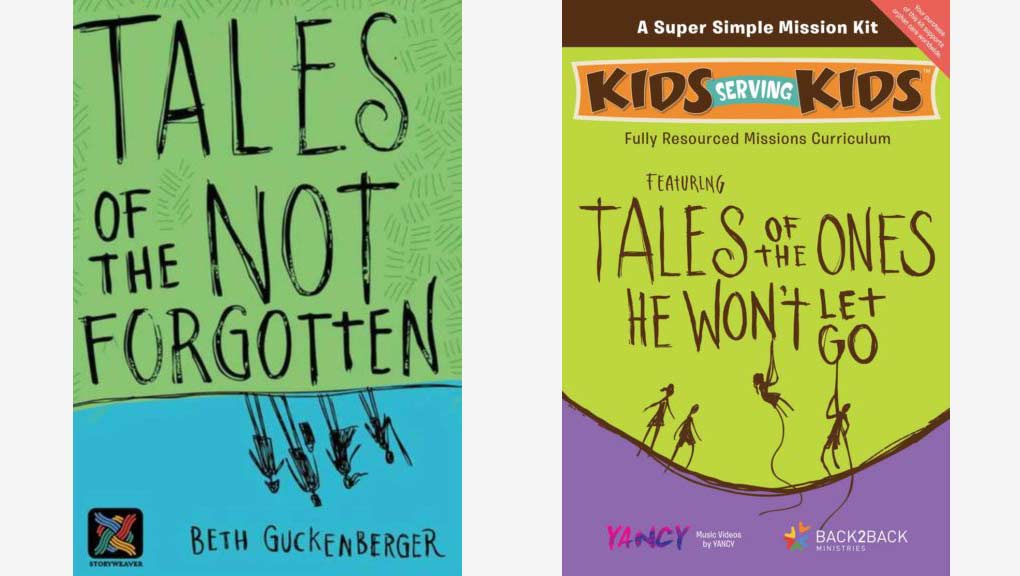The foster system has continued to take in more and more children in the last 10 years. Many churches are struggling to discern their roles in serving children in the system as well as supporting the families in their churches who are opening their homes to the children.
“You don’t leave a child in distress.”
— Dr. Janusz Korczak
Understanding the Call
There is a meaningful Hebrew phrase I learned a couple of years ago: tikkun olam. It translates “to repair the world.” I was on a trip to Israel, where they also defined tikkun olam as making crooked roads straight.
The idea is to see where something is broken and apply your gifts, talents, and treasures to straighten it.
An Illustration for Us All
To illustrate the point, the guide told us the story of a Polish pediatrician named Dr. Janusz Korczak. In addition to practicing medicine and writing children’s books, in 1912 Dr. Korczak started the Orphan Society—an orphanage for 200 Jewish children.
It was revolutionary and before its time in that he organized children into family units, instead of housing them in a warehouse-like facility. He rightfully understood that when children create healthy attachments in family-based settings, they are more emotionally stable and secure.
However, in 1939, Poland was occupied and the Nazi’s moved the Jews into the ghetto. The children were forced to leave the beautiful home he had created for them.
Dr. Korczak decided that if the children couldn’t live there, he wouldn’t stay either, so he moved to the ghetto voluntarily for the next few years.
On August 5th, 1942, a knock at the door revealed a Nazi officer who escorted 12 staff, 200 children, and Dr. Korczak on a train to a concentration camp. One of the Nazi soldiers at the gate of the camp recognized Dr. Korczak as his child’s favorite author and offered to spare his life if he could help get the children through the gate.
Dr. Korczak’s last remembered words were to this officer as he rejected the offer:
“You don’t leave a child in distress.”
Children being orphaned is an old story. We have biblical examples of it going back to Moses. History tells of it through war, famine, and crisis. Currently, we as a Church must face the reality: there are 400,000 foster children in this country.
Where do we begin? What are the first steps we can take as a church to tikkun olam, or repair the world?
First Listening

Intentionally Connect with a Foster or Adoptive Parent
There are most likely some experts already within your body. God calls people to bring “the lonely in families” Ps. 68:6.
Invite a Foster or adoptive parent into a conversation where you listen to what they have to say.
What are their needs? How can you better see their needs?
What challenges have they faced within your church? Do you have some opportunities for improvement?
What do they dream your church would do for them?
If the church isn’t supporting them, who has been their support?
There are 400,000 foster children in this country.
They will be your richest source of information, so don’t skip this step. If no one in your church has any experience as foster or adoptive parents, ask some pastor friends if they could share the names of someone in their church who you could buy a coffee and gain needed insight.
Reach out to Your Local Authorities
Set up a call with a social worker from your county’s child and family services. There’s a church in Washington that did this and learned there was no safe playground in their county where children could play, and a social worker could visit with an at-risk parent or a foster parent in a shaded area.
The church decided to make a major investment in a play structure and seating area. And now in this community, if you are going to meet with a social worker, it happens on their church grounds. Meeting practical needs opens doors.
Once you understand what the needs are in your body and in your community, it’s time to bring it to the leadership of the church.
Taking Next Steps

To get passionate advocacy at the highest levels of leadership in your church, you will need to present the problem as well as ideas for the solutions. This means:
Get Trained
There are plenty of powerful trainings developed to equip church staff and volunteers in trauma informed care. It’s the kind of training you don’t know what you don’t know, until someone points it out.
Caring for kids from hard places and their vulnerable families isn’t always intuitive. Training mitigates the risks and minimizes the mistakes that relying on only good intentions make. Outline a plan to get yourself equipped, then propose staff training, volunteer training, and even provide the service of parental training. Information is power and the more you have, the more manageable ministry to foster and vulnerable children becomes.
Children who have complex developmental trauma are, on average, developmentally about half their biological age. This kind of information is helpful for classroom teachers and foster parents who may have unfair expectations of the children in their care.
Trauma alters brain chemistry, damages the nervous system and sensory processing development, and damages the body’s ability to handle stress. As a result, when a child perceives a threat, they use protective strategies that can suppress the conscience and the result might appear as bad behavior.
Information is power and the more you have, the more manageable ministry to foster and vulnerable children become.
As the late Dr. Karyn Purvis taught, there is always meaning behind behavior. When a child doesn’t know how to say what they need, they act out. Understanding how to respond to behavior goes a long way in relationship construction, not destruction.
Partner Together
Who in your community is already ministering to foster kids, adoptive families, or vulnerable children? A first step might be to see how you can serve them, or join with them in a limited project.
Do they need funds? A hosting location? Volunteers? How can you offer what you already have and learn more about the needs in your community?
How can you tell their story to your congregation? What lessons have they learned that will help advance community outreach and your church’s understanding of this area of need? Inviting people to join in work that is already ongoing turns a “come and see” church into a “go and do” church.
Why We Serve
Throughout biblical history, God has called us to go after the least, the lost, the defenseless. He built a kingdom on leaving the ninety-nine and finding the one who has been separated. God has written promises in Scripture to orphans—the most vulnerable population of all.
He asks His family to fulfill these promises in His name. So, as His child, I am defended by Him, but now I may defend others. I am remembered by Him, so I can remember others. I am heard by Him, so I can listen to others.
Together, we are an extension of Jesus, showing a lost world His passionate pursuit.
If we don’t know where to start, looking at the Bible and its many promises for orphans is a good place to begin. In Psalm 82, God promises to defend their cause, deliver them, and rescue them. He promises to lift them up and be their father and give them a home in Psalms 113 and 68.
He promises to not forget them and give them compassion and give them justice and be their helper (Is.49, Hosea 14, Psalm 10.) The list goes on and on.
Of all the things in the Bible we can debate, helping orphans is not one of them. God is for them, and we look like Him when we flesh out His promises, especially when they require sacrifice and unconditional love.
Outlining this for your leadership or your Church body will go a long way to laying a foundation for this work.
What to Do

1. Be Willing to Serve
Make sure the foster and adoptive parents in your children’s ministry know you are willing to understand the unique needs of their specific children. Ask them when you might be able to connect to better understand what makes them feel comfortable. Ask what you can read or learn to serve their kids better.
2. Make Care Packages
Immediately activate some volunteers to make baskets or care packages for kids new to the children’s ministry. It can have fidget spinners, church spirit wear, or sensory-sensitive toys. Right away these gifts say, “Who are you?” “We see you.” and “You belong.”
3. Be Trauma Informed
Make a sheet with a few basic principles to give to volunteers as a step toward making your ministry trauma informed. In the organization where I serve, Trauma Free World’s trauma competent care training teaches principles that can be passed along to volunteers.
One example is “Connect before you correct.”
This means when you see behavior in a child that needs addressed or re-directed, get down on the eye level of a child and take the time to make them feel seen, not just disciplined.
4. Make Transitions Predictable
When you have kids from hard places in your classrooms or big room settings, giving them predictable patterns that they can count on will increase felt safety and security. This brings out the best in them.
It might mean you give verbal warnings like, “In five minutes, we are going to go to our classrooms…” It might mean you have posted the order of events; it might mean you don’t change up teachers, knowing new faces can cause anxiety for foster children. However you remove the unknown, the result will be better adjusted and secure classrooms.
Share the Power of “Yes”
Share the power of “yes” and give kids choices. Think of how often you can purposefully say yes to kids.
“Teacher, can we have our snack now?”
Instead of “No, not now.” Try, “Yes, as soon as we finish our story.” I know gifted teachers who carry stickers, smelly lotion, or healthy gummy bears—little items they feel comfortable doling out as liberally as they can, knowing every time they answer “yes,” connections are created.
Giving as many options as possible will empower children who typically feel situations are out of their control.
“Do you want to use a pencil or a pen?”
“Would you like to sit or stand during the lesson?”
“Would you like to help pass out papers or stay in your seat?”
Share the power of “yes.”
By regularly depositing good words and experiences into children, we invest in their healing. We co-labor with parents to create emotionally safe environments where children meet adults who care about them and hear about our Jesus who loves them.
When there are success stories to share, share them wide and loud—to the foster parents and to the other volunteers and staff. “Jenny asked a question after the story.” “Stephen completed his craft without redirection.” “Diego sang along with the class during worship.”
Foster parents are used to hearing stories about their kids, but they are not usually good. Celebrating success (regardless of how insignificant it might sound to you) will leave parents with the impression you are for their family.
Sustaining a Culture
Five years ago, my family welcomed an eighteen-year-old young woman into our home. She was aging out of her foster family and lacked a sense of permanency. Several years later, on her 21st birthday, I was gently asking her questions regarding her actual birth date.
Do you know what time of day you were born?
Has anyone given you any details about your birth?
It was the first time someone had asked her these questions, and she was very uncomfortable. My husband, Todd, who was in the room with us, but not in the conversation, said from across the room, “Don’t worry about those answers. Some people make a big deal about where you are from … I don’t think it matters most where you are from, I think it matters most that you know where you belong. And in case you were still wondering—you belong here.”
After he said that, everything changed in our relationship with her. It’s like she had held some lingering questions: How long am I welcome? Am I one of them? And once we settled those questions with answers she liked, she blossomed.
If our churches and children’s ministries will spend more time helping people settle the question of belonging in their minds, we will see a healthy culture bloom where people feel welcome no matter where they’ve been or how they act.
And that is when healing happens.
Challenge kids to answer the questions: How do I pray? What can I give? Where can I go? Who will I serve?
Want your kids to take service to heart?
In Tales of the Not Forgotten, students follow real-life stories of other kids as they take you on a journey to faraway lands. See the hand of the great Storyweaver writing endings you’d never imagine!
Filled with fun, interactive learning experiences and kid-inspired service projects, the Tales of the Ones He Won’t Let Go Super Simple Mission Kit will open kids’ eyes (and grown-ups’ too!) to the needs in their community and around the world—then challenge them to do something about it!











